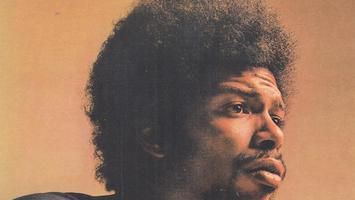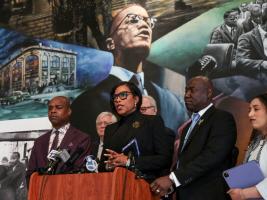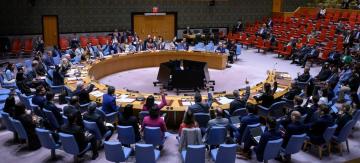The African Exposition at the Savannah Riverside Plant “is one of the most intense examples of fetishization, colonialism, exoticism, and dehumanization” the author has ever scene.
“Africans on display and for sale are staples in the historic diet of Savannah, and the entire region.”
Click here to view photos of the subject of this essay: The African exposition at the Savannah Riverside Plant and the Baobab Lounge.
A noted anthropologist analyzed fetishism, exoticism and white supremacy in the following way:
“From the Renaissance to the end of the eighteenth century, Europeans tended to fetishize the native peoples with whom they came into contact by viewing them simultaneously as monstrous forms of humanity and as quintessential objects of desire. Whence the alternative impulses to exterminate and to redeem the native peoples. . . When a given part of humanity compulsively defines itself as the pure type of mankind in general and defines all other parts of the human species as inferior, flawed, degenerate or ‘savage’ I call this an instance of fetishism.” (Hayden White, 1978, as cited in Blier, 1993, p. 145)
The African exposition at the Savannah Riverside Plant featured in Savannah Now news magazine October 2020 is one of the most intense examples of fetishization, colonialism, exoticism, and dehumanization I have ever seen. It is a text book model of casual white supremacist notions of Indigenous people as person-thing-animal objects. The Disney-like fantasy world it suggests completely embraces its own tragic myopia. As a place of food, drink and confection, it promotes a brand and entertainment packaging of Africa and African culture in a visual product: appropriated, distorted, misrepresented and sold.
“…the alternative impulses [are] to exterminate and to redeem the native peoples.”
For some, this may sound familiar. Africans on display and for sale are staples in the historic diet of Savannah, and the entire region. This is the city where banker/entrepreneur slavers/pirate human traffickers; eugenics philosopher Confederate vice presidents; constitution signatory slave factors; technological cotton industry innovators, and war-crime massacre military leaders rubbed elbows. Now, in a display with the dismembered, semi-nude, exotically painted bodies of black people among bound, stuffed and mounted animals, the further objectification of both the African male and female body looms. It would seem that more thoughtful and respectful considerations might be made before atrocities, such as the drinking lounge with its exotic jungle safari motif, were designed or implemented—and then actually thought to represent meaningful archival redress.
For the present, the line between citizen-participant and perpetrator/criminal is nearly invisible for many. The distortions of the past do little more than recompose the same segregationists distances and perspectives of today. Any display of fetish-African exotics—paralleled with animals and trophies is a harmful and disgraceful distortion of the genuine truths of African and all other Indigenous people in this hemisphere (and world). Entertainment, enjoyment and attractions—shows at the Savannah Riverside Plant inappropriately supplant actual culture and history with hospitality and brands.
Better things are needed, better things can (and will) happen. Let us aspire to a transformed and genuinely equal and co-mutual world.
The Visual Product (click to view photos)
Context can be revelatory, and in this case, it is everything. The placement of African bodies (seemingly stuffed) amid stuffed animals, shields, spears, masks, dismembered horns and trophy heads signifies the same non-person status projected upon enslavement era Africans and creolized Blacks in America. A starkly portrayed otherness is expressed through a spectacle performed by the image: exotic, degenerate, mute and perception-less. “It” is only created to be viewed or utilized at the whim of a user. Like Ota Benga, in his monkey cage at the Bronx Zoo (circa 1900), the figures at the SRP are merely objects to be consumed, jeered-at, ogled or tormented. They are merely backdrops for the revelry of bar patrons and onlookers.
Each portrait of an African, selectively placed beneath the heads of glassy eyed taxonomy, stare out blankly. Part of the torment is that the presence of the bar room exhibit, whether correctly or incorrectly done, disappears a more relevant legacy. The abundant Escape, Rebellion and Freedom legacies of both Savannah and the region, are swallowed up in a show of selectively remembered mytho-cultural tropes. The genuine cultural, historical and political truth of the region, rife with examples of collaborative Indigenous and African insurgency and revolt, [the Seminole wars, counter-American Revolutionary militancy, plantation sabotage and piracy and etc.], however, is kept from the dialogue. Today Africans appear in a spectacle parade, just like those in the human trafficking, trans-Atlantic conspiracy of Savannah’s own banker/pirate Charles L. Lamar, had been shoved about and tormented over a century ago. These Africans, however, only stare, glassy eyed, leg less torsos and floating heads, fixed, and silent; an objectification mired by both revulsion and longing.
“The abundant Escape, Rebellion and Freedom legacies of both Savannah and the region, are swallowed up.”
M’ni wi coni (water is life), the contemporary chant of Native people against the neocolonial force of climate destruction, signifies also, the spiritual power of the baobab. The appropriation of the tree for a lounge name further ensconces the tragic dilemma of the SRP exhibition. Baobab is a water and nutrient enriched resource of the African savanna. Today, the SRP has replaced its sacred life giving power with the promise of a strange Dionysian hospitality excursion: in a fog of Antebellum, colonial and Confederate fantasy.
The fetishization of African culture, in this sense, goes beyond the mere spectacle image. It also incorporates a form of crucial cosmological, philosophical, psychological and spiritual violence. Just as with other Indigenous people, a neocolonial enterprise seeks to take the waters away—to corrupt them, to rename and claim them in a distorted investment of fantasy, hegemony and supremacist projection.
Finally, Savannah is unquestionably Ground Zero for the Confederate ideal, that is, the philosophy and cornerstone of the movement was established here. Georgian and Vice President of the Confederacy Alexander Stephens made the following foundational speech at The Savannah/ Athenaeum Theater on March 21, 1861:
“The new constitution has put at rest, forever, all the agitating questions relating to our peculiar institution African slavery as it exists amongst us the proper status of the negro in our form of civilization... the leading statesmen at the time of the formation of the old constitution, were that the enslavement of the African was in violation of the laws of nature; that it was wrong in principle, socially, morally, and politically... Those ideas, however, were fundamentally wrong. They rested upon the assumption of the equality of races. This was an error. It was a sandy foundation, and the government built upon it fell when the ‘storm came and the wind blew.’... Our new government is founded upon exactly the opposite idea; its foundations are laid, its corner- stone rests, upon the great truth that the negro is not equal to the white man; that slavery subordination to the superior race is his natural and normal condition (Stephens, 1863) see: https://www.csaconstitution.com/p/alexander-h.html
Percussionist David Pleasant has worked for over 35 years as an exponent, researcher, developer, and innovator in early African American and Gullah-Geechee performance legacies. The Pleasant Institute supports a linked effort in Community-based cultural awareness, continuing education, and arts-based literacy.



















